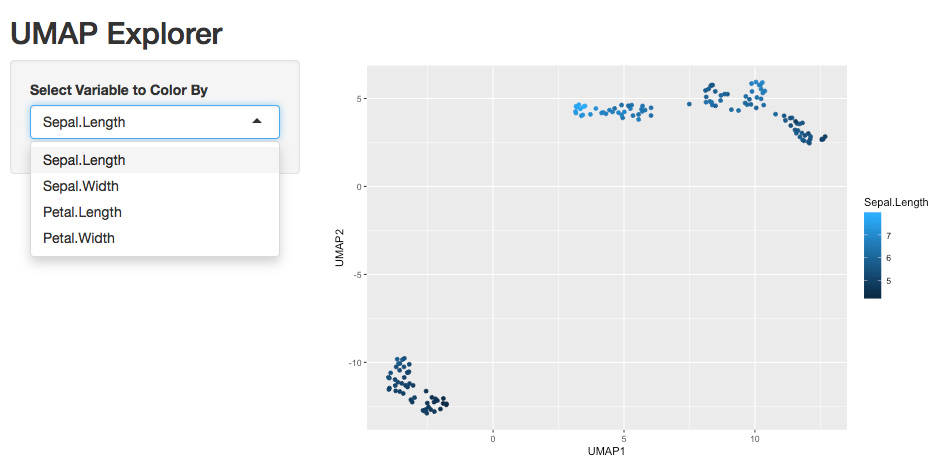

That means the input is dynamic and can change. In order to interpret this information on the server side we need to tell the server that this is reactive input. The value of the selected input can be used on the server side by referring to with input$variable where variable is the inputId we defined on the ui side. Shiny is package that makes it easy to build interactive web apps straight from R & Python. Looks good! Now we need to go back to the server side and make use of this input selection. # shinyUI( # fluidPage( # sidebarLayout( # sidebarPanel( selectInput( inputId = "country", # essential! give the input a name that you will need on the server side label = "Select country", # text displayed in your app choices = unique(gapminder $country), # input to choose from, here all gapminder countries selected = "Netherlands") # define default # ), # mainPanel( # plotOutput("plot") # ) # ) # ) # ) 21.1.2 Showing distributions alongside scatterplots.19.1.1 Recreating the graph with more manual labour.15.3 Other ways to visualize two continuous variables.15.1.3 Regression lines for different groups.15.1.2 Manually adding regression lines.15 Visualizing two continuous variables.13.3 Using multiple datasets in one graph.11.4 An important note on mean-error-plots.11.2.1 Using the built-in mean_se() function.8.2.1 Position = stack/dodge/fill/identity.You’ll learn the virtue of patience as R frustrates you:.You can not-always-easily-but-beautifully visualise stuff:.You can easily and beautifully visualise stuff:.You’ll learn about the wonderful world of coding:.You can also do fancy “state-of-the-art” analysis stuff, for example:.You can do ‘standard’ analysis, like linear regression:.R files that contain various functions and modules that comprise my Shiny application. The file modules.R represents actually many. My Shiny application lives in R/app.R wrapped in a function called callApp(). I have structured my package according to the layout described by Hadley Wickham in "Mastering Shiny: ├── DESCRIPTION How can I implement the use of a pool object in an R Shiny application structured like a package?


 0 kommentar(er)
0 kommentar(er)
